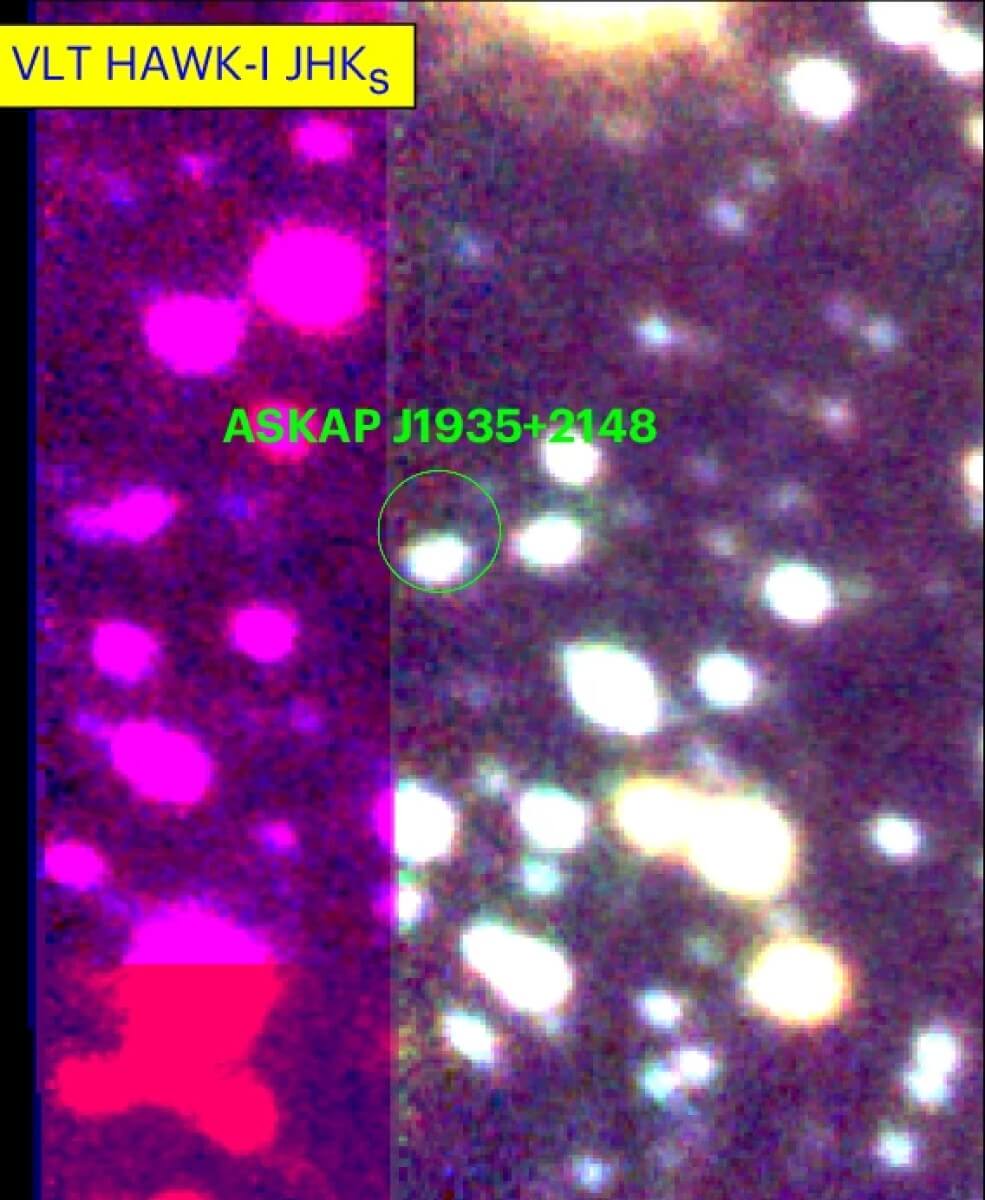
(Credit: Jurik Peter/Shutterstock)
MANCHESTER, United Kingdom — In the depths of the universe, a team of astronomers has stumbled upon a cosmic mystery that challenges our understanding of the life cycles of stars. Led by Dr. Manisha Caleb at the University of Sydney and Dr. Emil Lenc at CSIRO, the researchers have discovered a peculiar object, believed to be a neutron star, that spins at an astonishingly slow rate — just once every 54 minutes.
Neutron stars, the ultra-dense remnants of dead stars, are known for their mind-boggling rotational speeds, typically spinning on their axis in a matter of seconds or even fractions of a second. However, this newly discovered object, dubbed ASKAP J1935+2148, defies this norm, emitting radio signals at a comparatively leisurely pace.
The enigmatic radio signals from ASKAP J1935+2148, revealed in the journal Nature Astronomy, were first detected using CSIRO's ASKAP radio telescope in Western Australia.
“What is intriguing is how this object displays three distinct emission states, each with properties entirely dissimilar from the others. The MeerKAT radio telescope in South Africa played a crucial role in distinguishing between these states. If the signals didn't arise from the same point in the sky, we would not have believed it to be the same object producing these different signals,” says Dr. Caleb in a media release.
The ASKAP telescope's ability to capture a large part of the sky at once allowed the researchers to spot the slowly flashing object while simultaneously monitoring a source of gamma rays and seeking a fast radio burst. The radio signals, which traveled approximately 16,000 light-years to reach Earth, hint at the object's true nature.

Discovering a Cosmic Chameleon
Further observations of ASKAP J1935+2148 revealed its chameleon-like behavior. The object switches between three distinct emission states: a bright pulse state, a weak pulse state, and a completely silent state. During the bright pulse state, it emits highly polarized radio pulses lasting 10-50 seconds, indicating the presence of strong magnetic fields. In contrast, the weak pulse state is characterized by much fainter pulses lasting only a few hundred milliseconds but with a high degree of circular polarization. Most intriguingly, the object occasionally falls silent, exhibiting no detectable pulses at all.
Over the course of eight months, ASKAP J1935+2148 progressively evolved between these states, suggesting physical changes in the region responsible for the emissions. The exact nature of these changes, however, remains a mystery.
“In the study of radio emitting neutron stars we are used to extremes, but this discovery of a compact star spinning so slowly and still emitting radio waves was unexpected,” explains co-author Ben Stappers, a professor from the University of Manchester. “It is demonstrating that pushing the boundaries of our search space with this new generation of radio telescopes will reveal surprises that challenge our understanding.”
While the nature of the radio emission and the rate at which the spin period is changing suggests that ASKAP J1935+2148 is a neutron star, the researchers have not ruled out the possibility of it being an isolated white dwarf with an extraordinarily strong magnetic field. However, the absence of other nearby highly magnetic white dwarfs makes the neutron star explanation more plausible.
The discovery of this cosmic enigma may force scientists to reconsider their decades-old understanding of neutron stars, white dwarfs, and how they emit radio waves. As further investigations continue, the origin of such a long-period signal remains a profound mystery, with white dwarfs and neutron stars being the prime suspects.
ASKAP J1935+2148 may represent a new class of objects that bridge the gap between known long-period radio transients and more conventional pulsars. Its switching between emission states bears a striking resemblance to the behavior of certain pulsars, hinting at a possible connection. However, its extremely long period and peculiar emission characteristics set it apart from any known pulsars.
The international team of astronomers, including scientists from the University of Manchester and the University of Oxford, continues to investigate this perplexing object. Further research is required to confirm its true nature, but regardless of the outcome, the discovery of ASKAP J1935+2148 has already opened up new avenues for exploration and challenged our preconceived notions about the universe we inhabit.
EdNews Editor-in-Chief Steve Fink contributed to this report.










